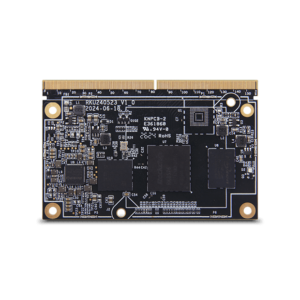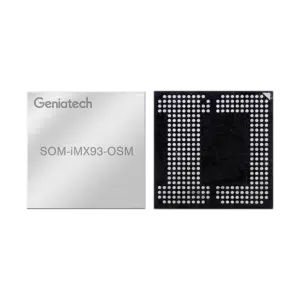What Is a Computer on Module (COM) and How It Benefits Embedded Systems
What Is a Computer on Module (COM) and How It Benefits Embedded Systems
Blog Article
The quick progress of engineering has driven significant inventions in embedded methods, among which can be the computer on module market Acting as a link between custom electronics and off-the-shelf segments, the SoM is redefining how designers method stuck program design. This blog highlights the primary knowledge of a Program on Module and their rising programs in several industries.

What's a System on Component (SoM)?
A Program on Element (SoM) is a compact, ready-to-use board that integrates all of the key components of a system on a single module. This typically involves the model, storage, energy management devices, and often additional peripherals like Wi-Fi or Ethernet. Unlike a traditional single-board computer, an SoM doesn't include fittings and program slots pre-installed, indicating it must be combined with a copyright board to form an entire system.
Designed to streamline growth workflows, the modular nature of an SoM enables developers to miss the complicated process of designing and assembling every individual element from scratch. By adopting an SoM, businesses can focus more on the application-specific functions of the products.
Features of Using Program on Component
The integration of an entire process on a singular component gifts many benefits. First, it considerably decreases the full time needed for item development. Pre-tested segments assure balance, preserving months of work for design teams.
Furthermore, the scalability of an SoM allows businesses to adjust efficiency degrees based on project requirements. As an example, a low-cost option can easily scale right into a high-end product by trading the model in the component while preserving the company table design. This method reduces engineering risks while selling long-term cost-efficiency.
Last but not least, the stability of an off-the-shelf element ensures large compatibility with present resources and frameworks, which makes it well suited for both little startups and large enterprises looking to hit the market quickly.
Crucial Purposes of SoM in Embedded Techniques
The usage of System on Modules spans many high-demand industries including but not limited by medical units, automation, and consumer electronics.
Medical Products
Accuracy and reliability are paramount in healthcare. Program on Modules with protected running features are stuck in monitors, imaging devices, and portable diagnostic tools.
Commercial Automation
Effective and energy-efficient, an SoM is a must for commercial control systems and autonomous robotics. Their scalable architecture helps high-speed data running and IoT connectivity.
IoT Units

Customer products like smart thermostats, wearable units, and actually house assistants combine an ultra-compact Process on Element for easy performance.
The Program on Component continues to achieve grip because of its paid off difficulty and versatility, cementing itself as a future-proof solution in the embedded systems sphere. Industry leaders are actually leveraging these adventures, and their scope is likely to increase further as engineering evolves.
Report this page